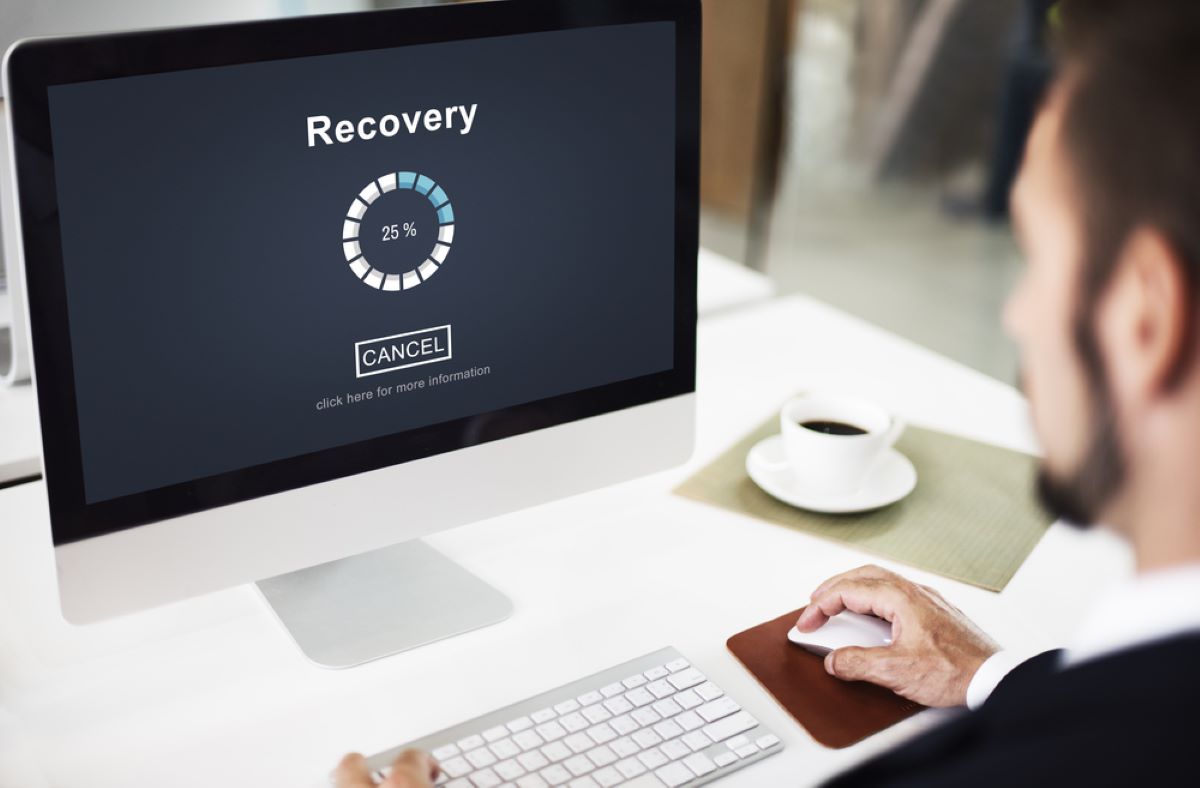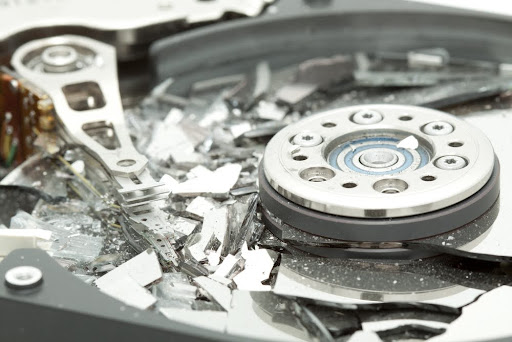Imagine this: You wake up ready for a positive and productive day. You head to…
The 10 Most Common Data Recovery Mistakes

Welcome to the digital age, where our lives are intricately woven into bytes and bits. Losing access to your digital treasures can be a heart-stopping moment, whether it’s crucial work documents, precious family photos, or your favourite music collection.
But before you plunge into the world of data recovery, pause and take a breath. We’re here to guide you through the labyrinth of data recovery mistakes, ensuring you stand the best chance to recover data successfully.
Here at DriveSavers, we’ve seen it all, and we’re passionate about helping our UK customers navigate the tricky terrain of recovering data, even from the most bricked and bewildered devices. So, let’s dive in and demystify the 10 most common pitfalls in the journey to reclaim your digital must-haves.
Mistake 1: Attempting Recovery without Proper Knowledge
Attempting data recovery without the proper know-how is a risky venture. Data recovery is a complex process requiring a nuanced understanding of storage devices and recovery techniques. Trying to do it yourself without adequate knowledge can lead to inadvertent mistakes, making the situation worse and potentially leading to permanent loss of data.
Many people try to recover data on their own, lured by the sheer number of online tutorials and guides. However, these resources, while sometimes helpful, can’t replace the depth of knowledge and experience possessed by professional data recovery experts. It’s like a novice trying to navigate a ship through a stormy sea without a map. The odds just aren’t in their favour.

In our years of experience at DriveSavers, we’ve encountered numerous cases where well-intentioned attempts to recover data have gone awry. Individuals and businesses alike, in their eagerness to reclaim their lost files, have inadvertently caused more damage, making the task of recovering data even more challenging. These situations underscore the importance of seeking professional help when faced with data loss.
Mistake 2: Using Unverified Data Recovery Software
In this digital age, the internet is awash with data recovery tools, each promising to be the solution to your data loss woes. However, not all of these tools are created equal. Using unverified or poorly designed data recovery software can be a gamble, risking further damage to your storage device and potentially leading to permanent loss of data.
There’s always a temptation to opt for free or cheap data recovery solutions found online. While the price tag (or lack thereof) may be appealing, these tools often lack the reliability and effectiveness of established data recovery processes. They may not be updated regularly, leaving them incompatible with the latest storage technologies and file systems, and in some cases, they may even contain malware.
At DriveSavers, we’ve seen the fallout of using subpar data recovery tools. Clients come to us after such tools have failed to recover data or, worse, have compounded the problem. We cannot stress enough the importance of choosing verified and trustworthy professionals when attempting to recover data.
Mistake 3: Ignoring Signs of Physical Damage
Storage devices, despite their robust exterior, are delicate on the inside. Physical damage to a device can be a clear signal that something is amiss, and attempting to recover data from a damaged device can lead to further complications. It’s crucial to recognise and respond to these signs promptly to prevent additional loss of data.
Common indicators of physical damage include strange noises coming from a hard drive, error messages, or a computer’s failure to recognise a connected device. These signs should not be ignored; they are the device’s way of telling you that it needs help. Continuing to use a failing device in this state can be detrimental, risking irreversible damage.

Handling a physically damaged device requires precision and care. Our team at DriveSavers is equipped with the necessary tools and expertise to safely navigate these tricky situations, maximising your chances of successful data recovery. Don’t let physical damage be the end of your digital story. Let the experts step in and guide you through the recovery process.
Mistake 4: Deleting Data Before Ensuring a Full Backup
In the age of digital abundance, it’s common to find ourselves needing to clear space on our devices. However, one of the most common data recovery mistakes to avoid is failing to ensure that you have a full and accessible backup before deleting files. The assumption that all deleted files can be easily retrieved can lead to heartache if a backup is not in place.
The process of creating a backup is often set and forgotten. However, it’s crucial to verify that this backup is complete and accessible before you start to delete any files from your device. This extra step can seem tedious, but it’s a small price to pay to avoid the potential loss of data.
We’ve seen numerous cases where individuals have deleted files only to discover that their backup was incomplete or outdated. These situations highlight the importance of a robust backup strategy and the necessity of verifying backups before deleting files.
Our team at DriveSavers is passionate about helping our clients avoid such pitfalls. We advocate for regular backup checks and offer guidance on establishing a reliable backup strategy. Don’t let the rush to free up space lead to unnecessary loss of data. Take the time to verify your backup and protect your digital treasures.
Mistake 5: Not Disconnecting a Failing Drive Immediately
When a storage device starts showing signs of failure, time is of the essence. Continuing to use a failing drive can exacerbate existing issues, leading to further complications and potential loss of data. The immediate response should be to disconnect the drive and seek professional help.

The signs of a failing drive can vary, but common indicators include frequent error messages, slow data access times, or files disappearing and reappearing. Ignoring these signs and continuing to use the drive is a bit like driving a car with a failing engine. Eventually, it’s bound to break down.
In our experience at DriveSavers, we’ve seen the repercussions of delayed action. Drives that might have had a chance at successful data recovery became unrecoverable because they were used after showing signs of failure. Our advice is clear. At the first sign of trouble, disconnect the drive and consult with a data recovery expert.
Mistake 6: Ignoring Encryption During Recovery
Encryption is a double-edged sword in the world of data recovery. On the one hand, it provides an essential layer of security, protecting your data from unauthorised access. On the other hand, it adds a layer of complexity to the data recovery process, requiring specialised knowledge and tools to successfully recover data.
When dealing with encrypted drives, it’s crucial to understand that the recovery process is different from that of non-encrypted drives. The encryption keys would ideally be available, and the data recovery tools being used must be capable of handling encrypted data.
Our advice to anyone facing data loss on an encrypted drive is to be upfront about the encryption. Providing this information from the outset allows us to tailor our recovery process to the unique challenges posed by encryption, ensuring the best chance of success in recovering your data.
Mistake 7: Handling Storage Media Improperly
Storage media, from hard drives to SD cards, are delicate and require careful handling. Mishandling these devices, whether through exposure to extreme temperatures, moisture, or physical shock, can lead to damage and data loss.
It’s crucial to handle storage media with care, storing them in a safe environment and being mindful of potential hazards. Even small drops or exposure to liquids can be detrimental, leading to the need for data recovery.

At DriveSavers, we often encounter storage media that have suffered physical damage due to improper handling. These situations are preventable, and we encourage our clients to take the necessary precautions to protect their data.
In cases where storage media has been damaged, our team at DriveSavers has the expertise to recover data, even from the most compromised devices. However, prevention is always better than cure, and proper handling of storage media is a crucial step in safeguarding your digital data.
Mistake 8: Overwriting Data
Once data is overwritten, the chances of recovery are slim. It’s a common belief that deleted files remain accessible until they are overwritten, but in reality, the process of overwriting can happen quickly and unexpectedly.
Avoid using the affected storage device for new data or installations, as this can lead to overwriting. Be particularly cautious when dealing with solid-state drives (SSDs), as they employ wear-levelling algorithms that can quickly overwrite deleted data.
Recovering overwritten data is a complex process with no guarantees, underscoring the importance of acting quickly and not using the affected drive.
Our team is dedicated to providing the best chance of data recovery, even in cases of overwritten data. However, the best course of action is always to avoid overwriting in the first place, safeguarding your data and ensuring that it remains recoverable.
Mistake 9: Ignoring the Warning Signs of Malware or Ransomware
In today’s digital landscape, cybercriminals are pervasive threat actors capable of causing significant data loss. Being vigilant and recognising the signs of a cyberattack is crucial to preventing damage and ensuring the security of your data.
Common signs of malware or ransomware include unexpected system behaviour, loss of access to files, or ransom messages demanding payment in exchange for access to your data. Ignoring these signs or attempting to recover data without addressing the underlying infection can lead to further complications and potential data loss.

Our advice to anyone facing potential malware infection is to seek professional help immediately. Our team at DriveSavers is ready to help, providing expert guidance and solutions to secure your data and maximise the chances of a successful recovery.
Mistake 10: Procrastinating the Recovery Process
Time is a critical factor in the data recovery process. Delaying action when faced with data loss can lead to additional complications, reducing the chances of a successful recovery and potentially leading to permanent loss of data.
Whether due to uncertainty, fear of the recovery cost, or hopes that the issue will resolve itself, procrastination is a common response to data loss. However, the longer you wait, the more complex the recovery process can become and the higher the risk of irreversible data loss.
This can be due to data being further overwritten, hardware or software failures being exacerbated, or malware penetrating deeper, for example.
Don’t let procrastination stand in the way of recovering your data. Take immediate action, reach out to the professionals at DriveSavers, and give your digital treasures the best chance of recovery.
Safeguarding Your Digital Legacy
The journey to recover data can feel like navigating uncharted waters, fraught with potential pitfalls. But armed with the knowledge of common data recovery mistakes, you stand a solid chance of reclaiming your digital life. Whether it’s a family photo album, vital work documents, or your treasured music collection, your data deserves the best chance of recovery.
Ready to take the plunge and recover your lost data? The experts at DriveSavers are just a call away. We specialise in recovering data from all sorts of tricky situations, from damaged devices to the most perplexing data loss scenarios.
Don’t let data recovery mistakes put your digital life at risk. Contact DriveSavers today for your free evaluation, and let’s reclaim your digital world together.
Call 24/7 for a Free Evaluation: +44 (20) 30485486



